Pictures of the St. Pauli district
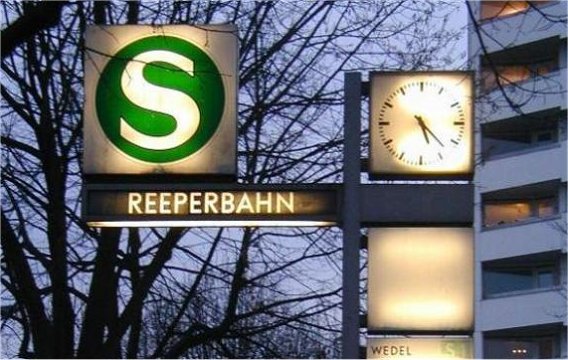
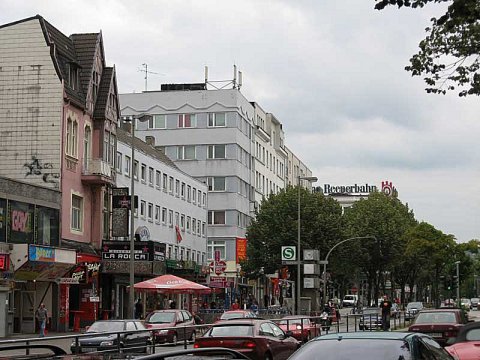

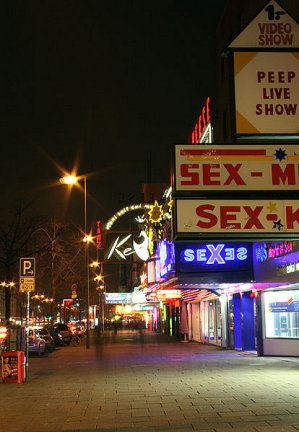

Fish Market
Fischmarkt
St.Pauli Fischmarkt
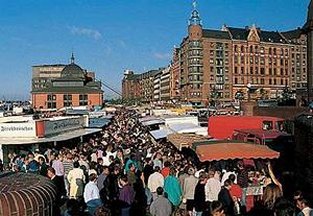
PAUL: If you went round the back there was Chug-ou. It was a Chinese Place just three hundred yards up the road, slightly off the Reeperbahn. Its great attraction was pancakes -'Pfannkuchen mit Zitrone bitte, und Zucker' - pancakes with lemon and sugar. It was the only place that sold them; everywhere else was 'foreign food' for us.
In the official Chinese language there is no word that could clearly
be pronounced as "chug". Maybe in one of the many dialects.
On a plaque across from the Kaiserkeller, one can still read the following
today:
Die
"Chinesenstraße" Schmuckstraße
Für die harten Arbeiten an den Maschinen und als
Schiffsköcher oder Hilfsstewards wurden auch auf deutschen Dampfschiffen
immer häufiger Chinesen eingesetzt. Seit jener Zeit siedelten sich
Chinesen in der Nähe des Hamburger Hafens an,nicht in großen
China-Towns wie in Amerika, sondern in einer Seitenstraße der Großen
Freiheit, der Schmuckstraße, in deren Häusern entstanden chinesische
Speiselokale, Läden und Logierhäuser. Diese Chinesenstraße
gab es in der NS-Zeit noch immer. Der Einsatz von Chinesen auf britischen
Kriegsschiffen bot den Nazis aber den Vorwand, den Chinesen Spionage zu
unterstellen. Am Morgen des 13.Mai 1944 wurden 160 verbliebene Chinesen
verhaftet und ins Arbeitslager "Langer Morgen" in Wilhelmsburg deportiert.
17 von ihnen starben in kürzester Zeit. Die Überlebenden
verließen nach dem Krieg das Land.
Informationen und Rundgänge
St.Pauli-Archiv e.V.
Wohlwillstraße 28, 20359 Hamburg
Tel 040 319 4772
Kunst im öffentlichen Raum
Kulturbehörde Hamburg
Paradieshof, Große Freiheit 27-33
In the late 80s, the burned out remains of the former Star-Club building was torn down along with the neighboring Paradieshof property, and replaced by some new buildings along with a new passageway, hardly anything remained of the old courtyard. Where once could be found the Hölle, the Flunder, or the Salome clubs, one is more likely to find standard entertainment instead, with the "artists" now coming almost exclusively from the Thai instead of the British Kingdom. Where now exists mostly sheer boredom, once prevailed high spirited madness, when many a musician after a successful stage performance at the Star-Club, spared no cost to maintain the Pub-atmosphere on an equally high level. Our friends from Liverpool were no exception, and John Lennon - as was well known, more likely the rule.
The putting up of a parking prohibited sign on the Große Freiheit right next to the Indra, can certainly only be taken to be more ironic than useful or comprehensible in this case. Who else could possibly want to stop here? Or should it maybe have meant "don't look, and keep driving". On this such sad place once stood the "Blockhütte", also one of the favorite bars of the Star-Club musicians, until it was torn down in 1982.
PAUL: Harald's was on the Große Freiheit. They would serve hamburgers called Frikadellen. We could never understand why they didn't call them 'hamburgers' in Hamburg.
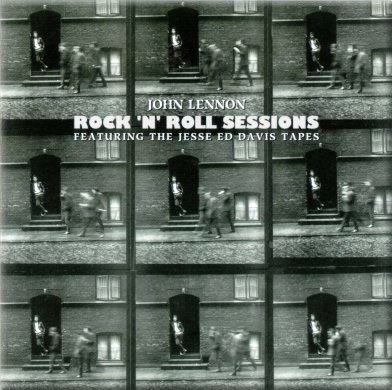
This is without a doubt what the most Rock'n'Roll door in music history looks like. Jürgen Vollmer discovered it in 1961, with John, Stuart, Paul and Pete, while the Beatles were still playing in the Top Ten club.
A note for possible emulators. Should the entance door happen to be
closed, don't try to open it forcefully, be polite and not too loud.
... and here, by Paul Hundertmark's at Spielbudenplatz 9, they bought
their cowboy boots.
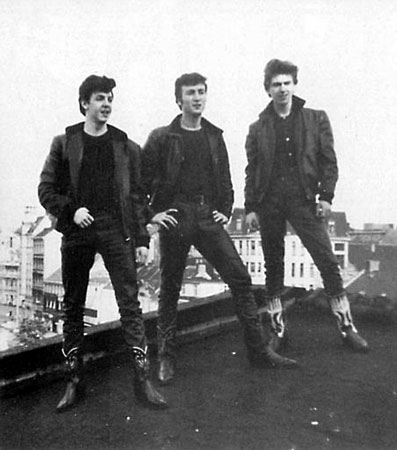
|
|
|
|
The Elbe river and the landing stages were the right place for the homesick
lads from Liverpool. When they took a GROSSE HAFENRUNDFAHRT (big
boat tour) through the harbour, or strolled along the river banks, up to
the British Mariner's Mission for example.
It was in this building where Astrid Kirchherr and Jürgen Vollmer once studied photography, and Klaus Voormann - commercial art. Back then this University of Applied Sciences was called: Meisterschule für Mode, Textil, Grafik und Werbung Master Craftspeople college for Fashion, Textile, Graphics, and Advertising
GEORGE: They were all very nice people and it was really good for us
to meet them, because they were more cultured than the locals. They had
a great appreciation for us, but they were very artistic and interesting
in themselves. They were the arty crowd around Hamburg. We started hanging
out with them. We learnt more from them at that point than they learnt
from us, including style. Klaus, Astrid and Jürgen became real friends.
Alster lake außenalster Brodersweg ... Alte Rabenstraße
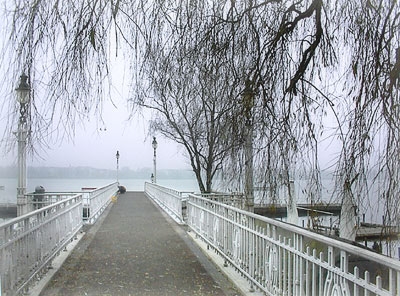
Between the Brodersweg and the Alte Rabenstraße lies the Milchstraße.
(street name)
The Außenalster seen from the east shore.
The building right of Johannisbollwerk 20 is the Gustav Adolf Church
- the oldest Seaman's Church of Hamburg, built in 1907.